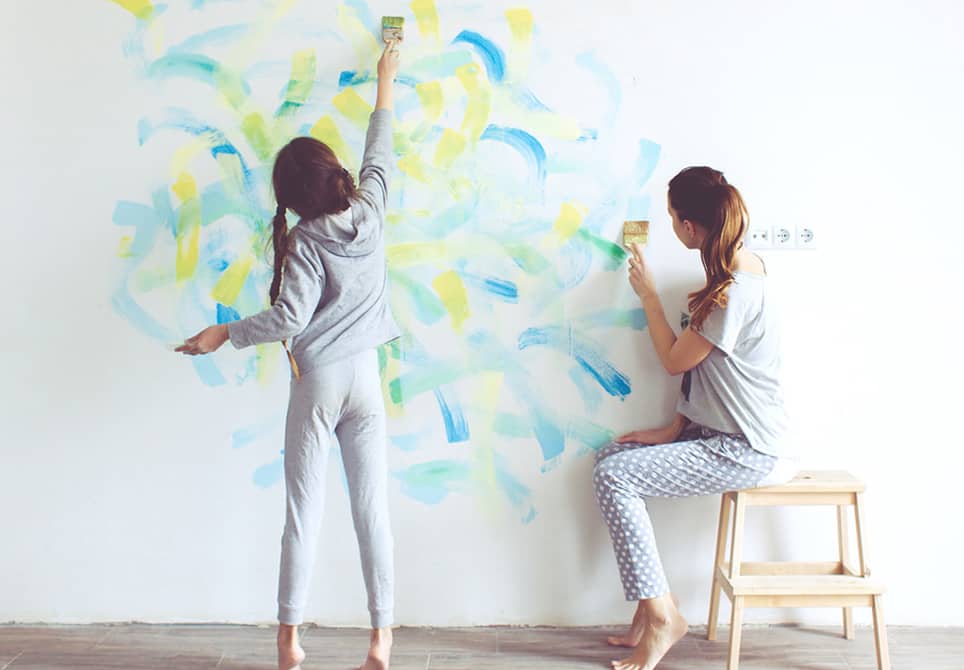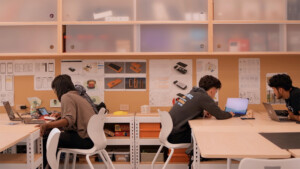What it’s like to be a Maker Mom

What is it like to be a Maker Mom? Humbling, mostly. As the parent of a young maker I am constantly thrown into the position of working with my daughter on things I have no idea how to do. We stumble together, we research, we iterate, and at the end of the day my daughter tells me, “I really love working with Mary (a friend and excellent seamstress) because she knows what she’s doing.”
But even as I have to relinquish the power of being the all-knowing, all-capable, decision maker and leader, I get a very different and much more satisfying kind of power. It’s a super-power, really: the ability to learn with my daughter on the same level, as partners. There is a beautiful giving up of control that not only allows me to connect with my child on a different level, it is also liberating in that I get to be ok with not having all the answers or being able to just give my child the outcome she wants. We have to earn it together. As a result we both experience the kinds of learning that is described as authentic, inquiry-based, constructionist, or constructivist.
How this diverges from traditional thinking becomes obvious when my daughter wears her creations in public. Outside of Maker Faire, she is generally asked, “Where did you get that?” Inside Maker Faire the question is usually, “How did you make that?” It’s a question that shows a respect for the maker, regardless of age, and very different from the intended-to-be-encouraging-but really-is-patronizing, “Oh look at that! Did you make it all by yourself?” which assumes that the value of the work is directly proportional to the independence with which it was done.
Makers know that we work as part of a community. We build on what others have done, we help each other, we share designs and tricks and modules. To say, “I made this” is not the declaration that it is my intellectual property, but rather an acknowledgement that I have learned how to create a thing of beauty using my community as a resource and my own ingenuity and sweat.
So when asked, “Did you make it all by yourself?” my daughter is stumped, and so am I. We made it together – she took lead and I helped. Sometimes I had knowledge she didn’t – like knowing to order low RPM motors; sometimes she had skills I was lacking – such as sewing piping. But how do you factually answer the question without agreeing to its faulty premise: that there is something inherently valuable in creating as a solitary individual over as a collaborator. How do you acknowledge that mom participated without implying that the adult was the leader?
This is where my super-power fails. In the face of the assumptions and well-meaning interactions of the outside world, our level playing field is distorted into something else. Fortunately, she and I have a sense of humor about such things, and while we answer courteously to the well-intentioned, we keep the knowledge of our partnership and the hours of working together to learn and create, safe on the inside.
It is an artifact of our schooling, I think, to consider collaborating as cheating and somehow demeaning of our work. Our experiences of group projects are probably of carrying or being carried by the other team members. We lionize the one who can do the whole project by him or herself rather than the one who can get a team to collaborate. Not only is this incongruent with how we work in the real world today, it dismisses what we have known for millennia – that many hands make light work and that a sewing circle is much more enjoyable and productive than solitary chores.
Fortunately Maker Faire is a place where collaboration, community, and achievement are all celebrated and the presumption is that a Maker owns her work, even if she is young.
If you’re looking for ways to support your child in transforming from student to maker, here are five ideas for your toolbox.
- Let things get messy. Find a place to store odds and ends, cardboard and buttons and wire and whatever else takes your young maker’s fancy. If it gets too full, some old maker treasure can be swapped out for new.
- Don’t try to save your young maker from failure or frustration. This is part of the project. Always provide the least amount of help needed to allow your child to be successful.
- That said, don’t be afraid to collaborate with your young maker. Helping get work done gives you a chance to spend time with your maker and be truly supportive. This is different from insisting your young maker take a particular path or approach.
- Take your child to a mini Maker Faire if one is available near you.
- Recognize all kinds of Making, whether it has a tangible artifact or is software or a poem, whether it has an electronics component or not (as in food, clothing, soap, woodworking, etc.) All Making is valuable and it is the mindset and the journey itself where most of the value resides, not just in the final result.
For more blogs by Marie, check out:
- How Can a Communication App Support Student Equity?
- What’s More Important, High Test Scores or Self-Direction?
- Gaming That Leverages Engagement, Mindset and Design
Stay in-the-know with all things EdTech and innovations in learning by signing up to receive the weekly Smart Update.





0 Comments
Leave a Comment
Your email address will not be published. All fields are required.